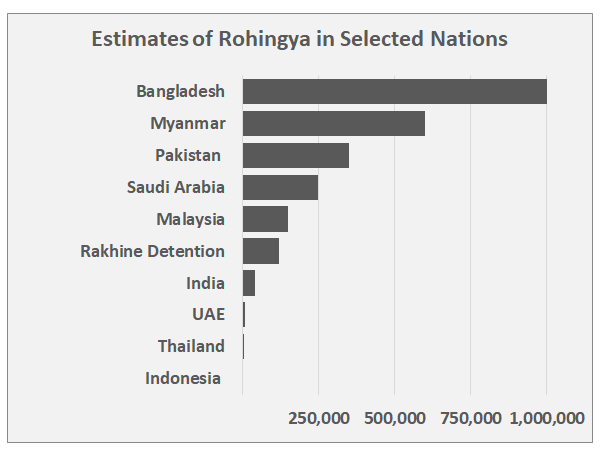Rohingya Crisis and Ambivalence: South Asia Journal
The United Nations labeled persecution of Rohingya people in Myanmar as ethnic cleansing. More than 3 million Rohingya fled with one-third living in makeshift, isolated camps along the Bangladesh-Myanmar border, and two-thirds living throughout Southeast Asia and the Middle East. Myanmar’s nationalism and hatred for the minority has not subdued. “While there has been a considerable Western outcry against the horrendous genocide against the Rohingya people, Russia, China, and India, which are known for marginalizing and mistreating their own ethnic and religious minorities, chose to remain silent and opposed international approbations against Myanmar,” writes Kalam Shahed, for South Asia Journal. He adds, “prolonged stay in the Rohingya camps may convince many Rohingya inmates to adopt militant measures to get back their ancestral homes and fundamental rights.” The essay reviews positions of nearby nations. Bangladesh confronts a humanitarian crisis, and instability and extremism among the refugees and wider Bangladeshi population could become a challenge. Meanwhile, India, China and others benefit from trade and investment in newly opened Myanmar, and China and Russia protect the nation in the UN Security Council. The UN warns against sending the refugees back to Myanmar without security guarantees. – YaleGlobal
Rohingya Crisis and Ambivalence: South Asia Journal
Regional ambivalence about the humanitarian crisis of Rohingya refugees could hamper relations throughout South Asia – and even destabilize Bangladesh
Sunday, May 19, 2019
Read the article from South Asia Journal about Rohingya refugees.
Dr. Kalam Shahed is an independent researcher based at Ottawa, Canada. Earlier, he taught international politics at the Queen's and Carleton Universities of Canada.

South Asia Jounal
© Copyright South Asia Journal